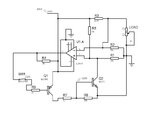tdock
Newbie level 2
Hello edaboard forum, this is my first time posting. Attached is a circuit I’ve been trying to develop for over current protection. The idea is to replace a resettable fuse (PTC) to get faster reaction time and less temperature dependence. Please read through the operation description and view my concerns. I am some what at a loss as to how these can be overcome. Any suggestions would be greatly appreciated. Thank you.
